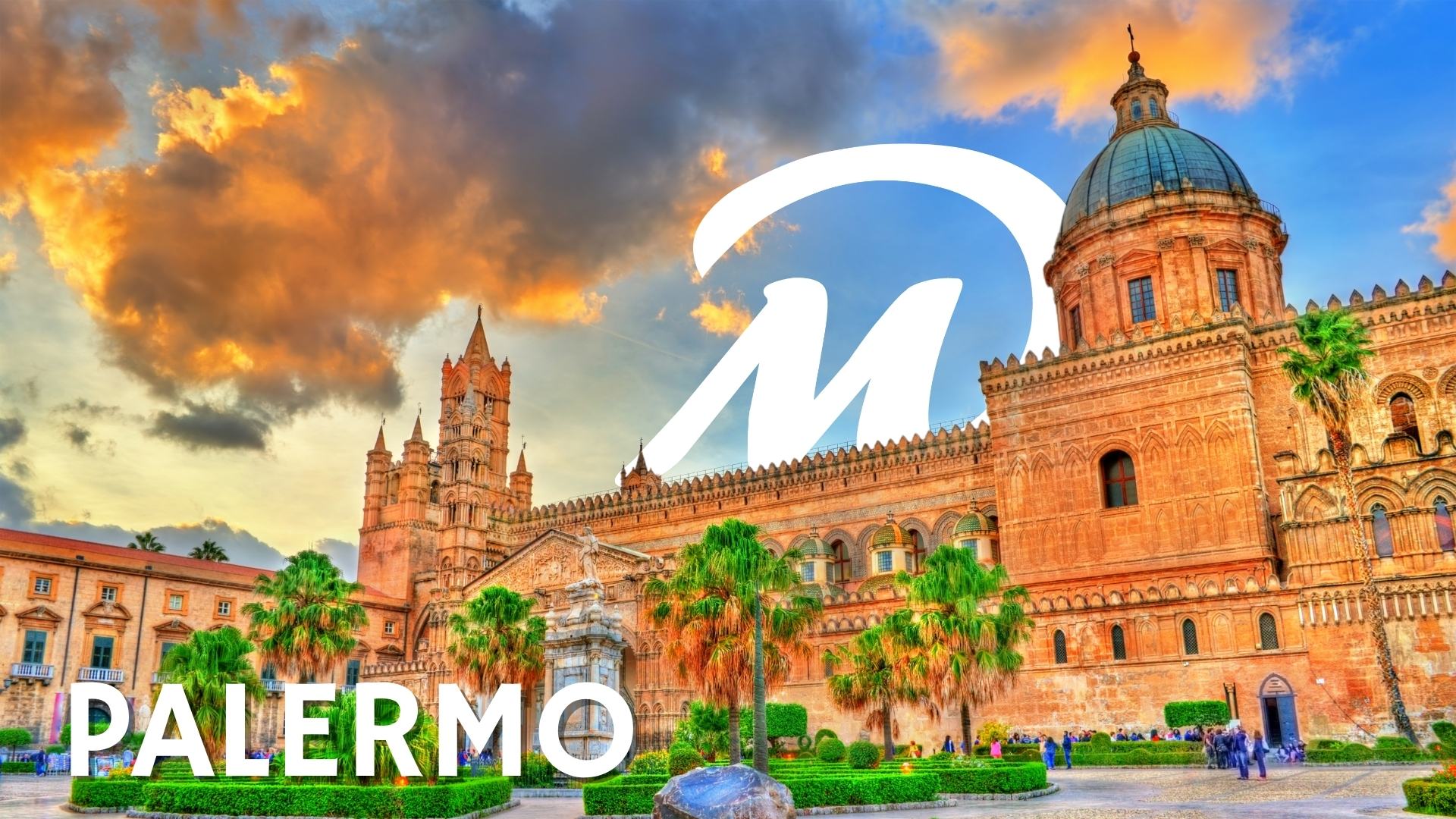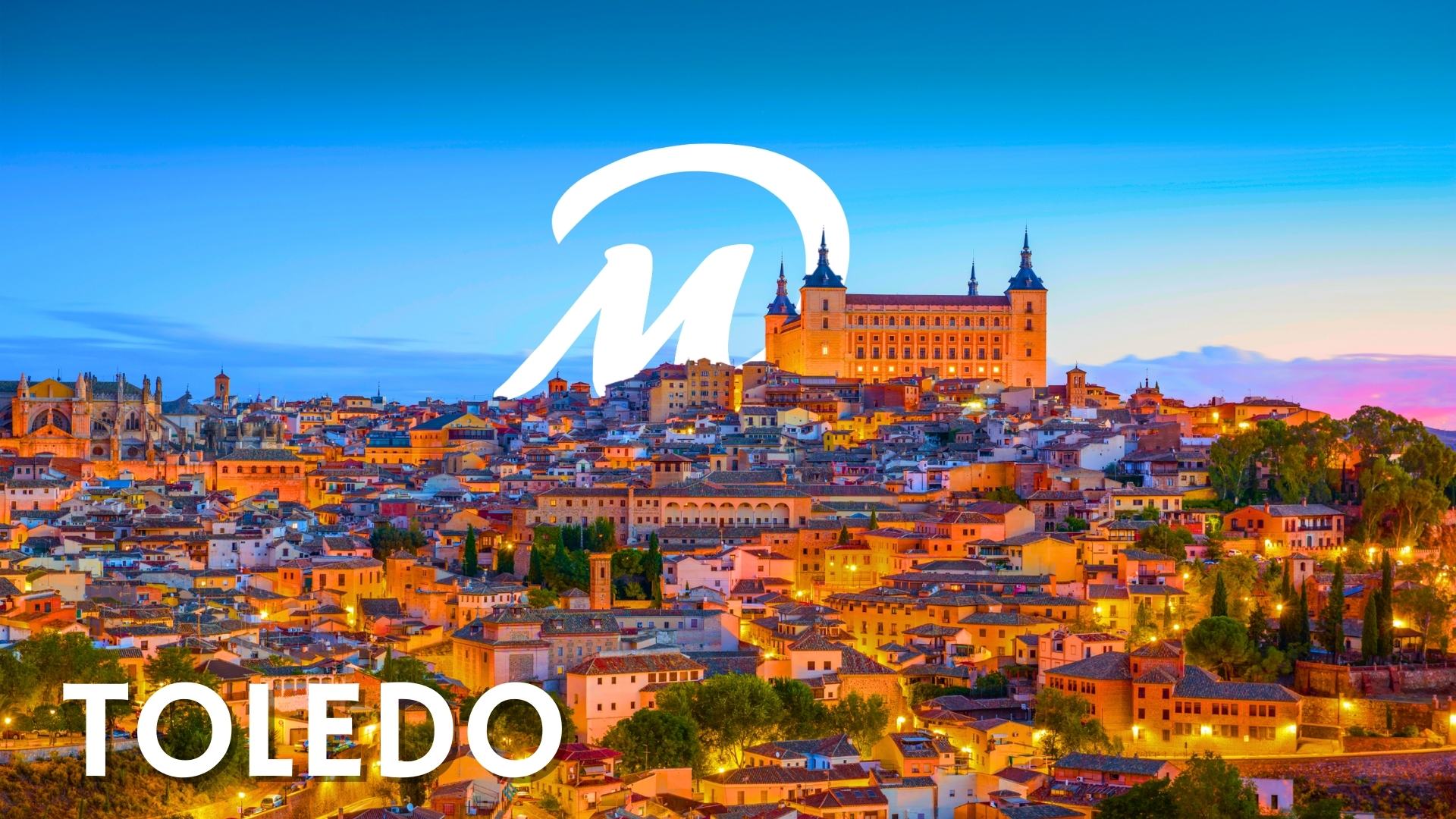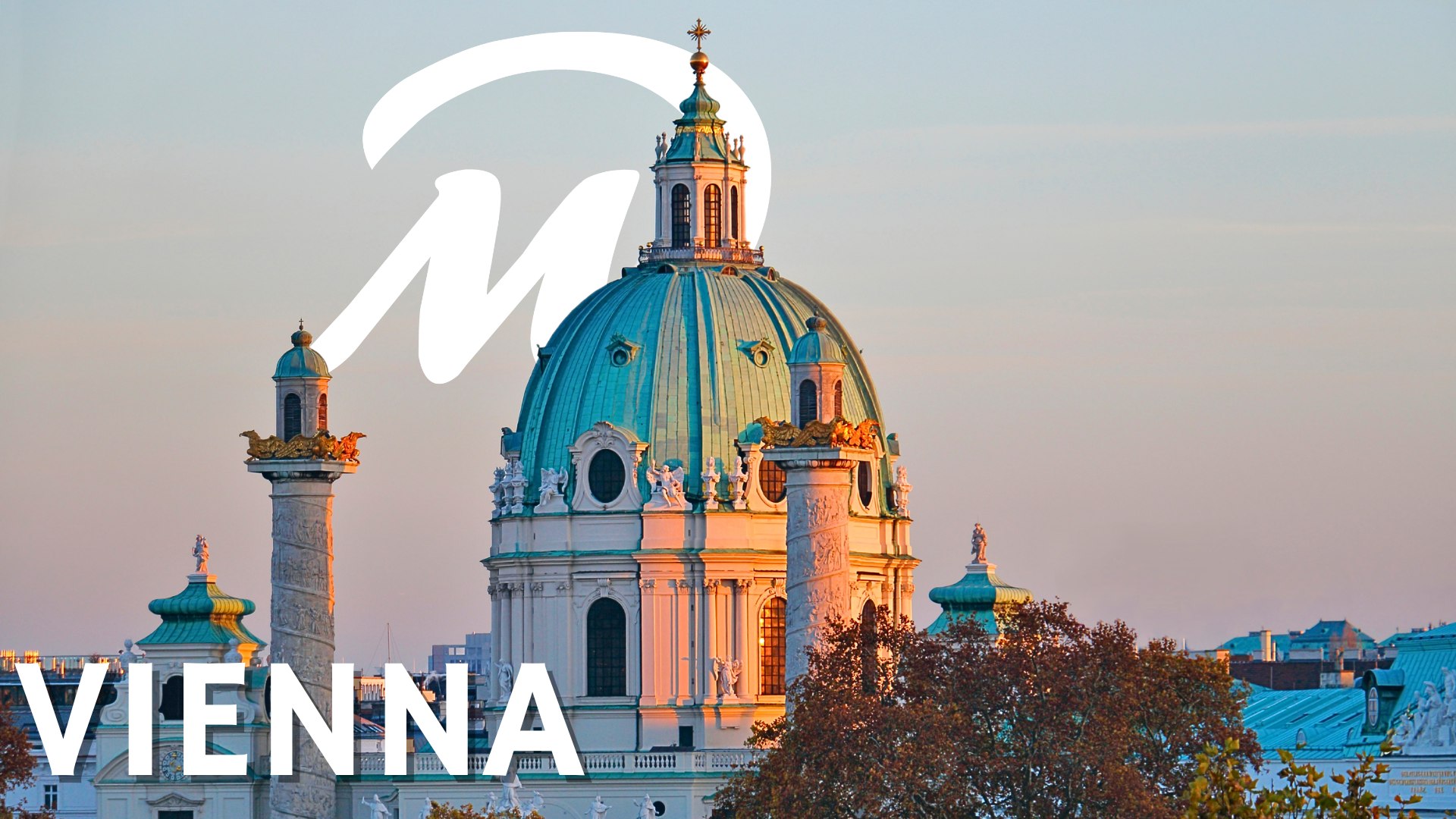In this blog I tell you things to do in Venice, with the must-see places, the hidden gems and those corners that don’t always appear in the guidebooks. Whether it’s your first time or you’ve already been, here’s a route to discover Venice with different eyes… or at least with your eyes wide open.
Venice is one of those few cities in the world that is like no other. It’s enough to set foot on its streets (well, streets-channels) to feel like you’re inside a film set… only here everything is real. No cars, no engine noises, no traffic lights. Here you hear the lapping of the water, the song of the seagulls and the soft murmur of gawking tourists who can’t quite believe where they are.
⌛ DO YOU WANT TO KEEP SEARCHING THROUGH BLOGS, OR WOULD YOU RATHER HAVE YOUR VENICE GUIDE READY TO GO?
The DareMapp app makes it easy. Enjoy the COMPLETE GUIDE ON YOUR PHONE and explore every corner your way, at your own pace and with no schedules.
Founded on more than 100 small islands in the middle of a lagoon in the Adriatic Sea, Venice is a feat of medieval engineering, a blend of history, art and pure fantasy. Since the 9th century, when it was already a commercial powerhouse, the city has shone like a jewel between East and West, drawing influences from far and wide and leaving us with a breathtaking architectural legacy: floating Gothic palaces, Byzantine churches, ancient markets, labyrinthine alleyways and bridges that look like something out of a fairy tale.
Here you don’t walk in a hurry, you stroll. The important thing is not just to get to St. Mark’s Square or cross the Rialto Bridge, but to get lost (literally) among the narrow streets, find a corner without tourists, discover a family trattoria where the risotto tastes like glory, or enter a bookshop where the books rest in gondolas to survive the “acqua alta”.
It is also a city of masks and legends, of eternal festivals such as Carnival, of furtive love affairs and secrets hidden behind peeling façades. A city that defies time and logic: how is it possible that something so fragile is still standing after more than a thousand years?
Things to do in Venice: a journey through its history, legends and magic corners
Venice cannot be understood without its history, and even less so without its legends. Here every stone has a memory and every bridge, a sigh. To understand its beauty, it is not enough to just look, you have to listen to what the city whispers between canals. Get ready, because we are going to visit some of the most emblematic things to do in Venice, but I am going to tell you the stories that make them truly unforgettable.
St. Mark’s Square and its Byzantine origins
It was the epicentre of Venetian power and, for centuries, the face that Venice showed to the world. Although its current appearance has been shaped over the centuries, its essence dates back to Byzantine times.
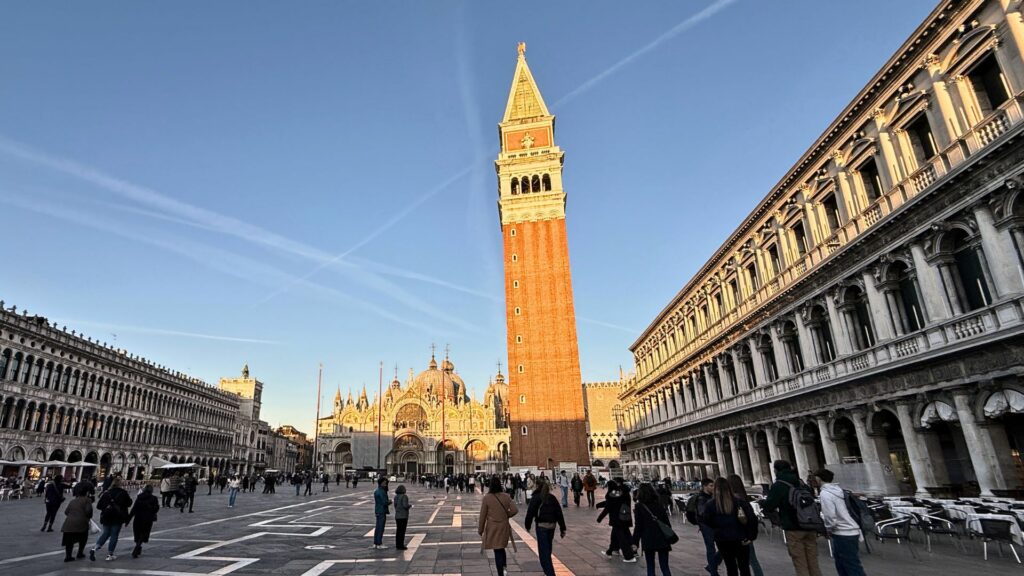
One of the most curious things to do in Venice is St. Mark’s Square. Did you know that it is not perfectly flat? In fact, it’s slightly inclined towards the lagoon, and that’s not a construction mistake. It was intentionally designed this way so that rainwater could drain more easily into the canals.
This inclination, coupled with its proximity to the sea, makes it the first place to flood when the tide comes in. This is why, when the tide is high, the square becomes a huge mirror in which the basilica, the campanile and the arches of the Procuratories are reflected, a natural spectacle to see in Venice!
If you want to visit the‘Campanile’ of St. Mark’s, follow this link here and enter without waiting.
St. Mark’s Basilica and the theft of the holy body

The history of St. Mark’s Basilica begins with a robbery. In the year 828, two Venetian merchants travelled to Alexandria and, without hesitation, took the remains of the Evangelist Mark, hiding them under layers of pork to outwit the Muslims. Once in Venice, the city became the custodian of one of the most revered saints in Western Christianity.
The basilica built in his honour is a unique temple to see in Venice, with five Byzantine domes, thousands of square metres of golden mosaics and an oriental air that makes it unlike any other church in Italy. If you go up to the upper gallery, you’ll see the famous bronze horses, brought from Constantinople as booty after the Fourth Crusade.
Check here to visit the basilica.
🧐 Did you know Venice has over 300 bridges?
With DareMapp, you can explore them all at your own pace and discover every corner of this amazing city, without missing a thing — all from your phone.
The Doge’s Palace and the Bridge of Sighs
The Doge’s Palace was the political centre of the Republic of Venice for centuries. From here the Doges and the Council of Ten ruled, with a mixture of diplomacy, intelligence… and a rather heavy hand. It is a dazzling palace, decorated with paintings by Tintoretto and Veronese, but it also has a dark side: the court rooms and the staircases that led to the cells. By following this link you can visit the palace without waiting.
The most famous sight to see in Venice is the Bridge of Sighs, which connects the palace with the former prisons. The name is not poetic by chance: it is said that the condemned men breathed their last sigh as they caught their last glimpse of sunlight through its little stone window. The most famous prisoner to cross this bridge was Giacomo Casanova, although his story doesn’t end here..
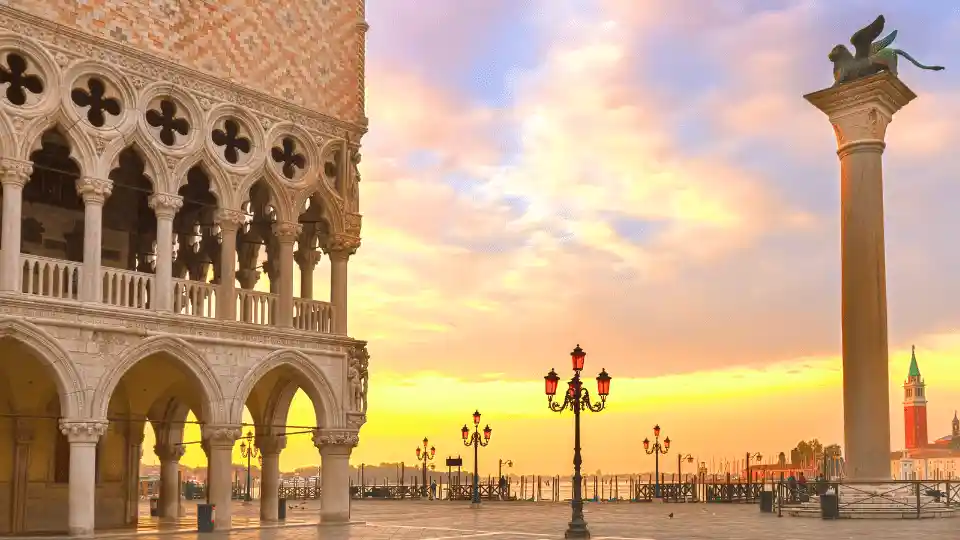
Rialto Bridge and old market
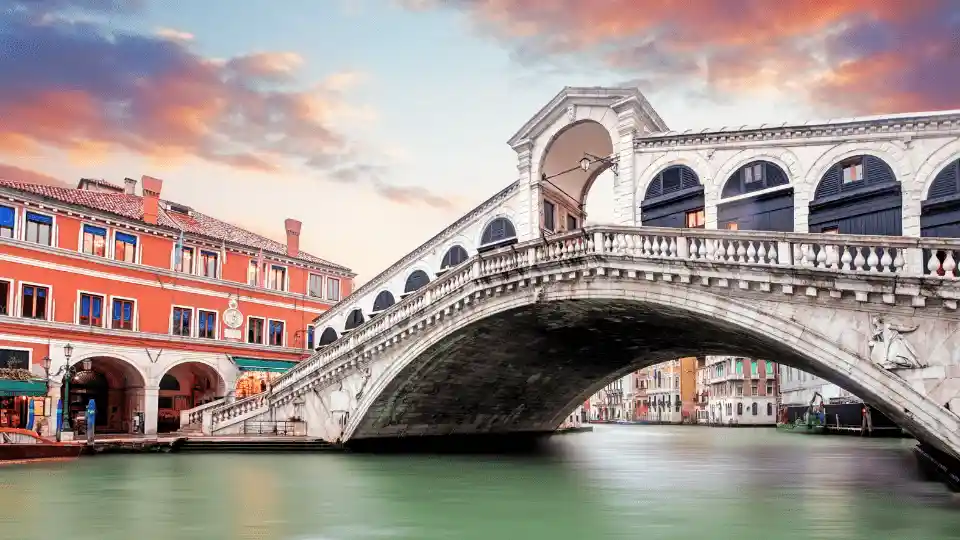
The Rialto Bridge is the oldest bridge spanning the Grand Canal, and also the most iconic bridge to see in Venice. For centuries it was the only direct passage between the two sides of the city, and its current stone structure was a gamble at the time. Today it is crossed by thousands of tourists every day, but it was once the commercial heart of the city.
At its foot is the Rialto market, one of the liveliest places in Venice since the Middle Ages. Ships laden with spices, silks, fish and exotic fruits used to arrive here. It still retains that vibrant atmosphere today, with stalls selling fresh fish, vegetables from the nearby islands and an aroma of history that can’t be bought with souvenirs.
🌊 IS A GONDOLA ENOUGH?
If you want to discover every corner of Venice without missing a thing, DareMapp puts everything right in your pocket. No need to row to uncover all its secrets!
Basilica della Salute
In 1630, a terrible epidemic of bubonic plague struck the city. More than 80,000 people died in just one year. In the midst of the disaster, the Venetians made a promise: if the city was saved, they would build a great temple dedicated to the Madonna. And so the Basilica of Santa Maria della Salute was born. This impressive white church, located right at the entrance to the Grand Canal, is one of the most iconic baroque sights to see in Venice.
The young architect Baldassare Longhena designed a basilica in the shape of a crown, with a large dome visible from almost any point. Inside are paintings by Titian and Tintoretto, and every 21 November, thousands of Venetians cross a temporary bridge to thank the Virgin for her protection in the traditional Festa della Salute.
For a different way to enjoy what there is to see in Venice, here’s a link to a gondola ride on the Grand Canal.
What to See in Venice: Discover the city’s secrets
Venice is a labyrinthine city. Every time you think you’ve found your way, an unexpected bridge, a hidden passageway or a square you’ve never been to before appears. The real treasures of the city are not always signposted, nor do they appear in tourist brochures. They are in the quiet corners, in the peeling façades, in the silence of a canal without gondolas. Here are some of these secrets that deserve to be discovered.
Campo Santa Margherita
This is the liveliest square in Venice, frequented by students and locals alike. By day it’s quiet, perfect for a coffee or a bite to eat outdoors; by night, it’s full of young people, with wine bars(bacari) and terraces with friendlier prices than in the tourist areas. It may not appear on every list of what to see in Venice, but there are no palaces or monuments here: there is something better, an authentic, everyday Venice.
Contarini del Bovolo Staircase
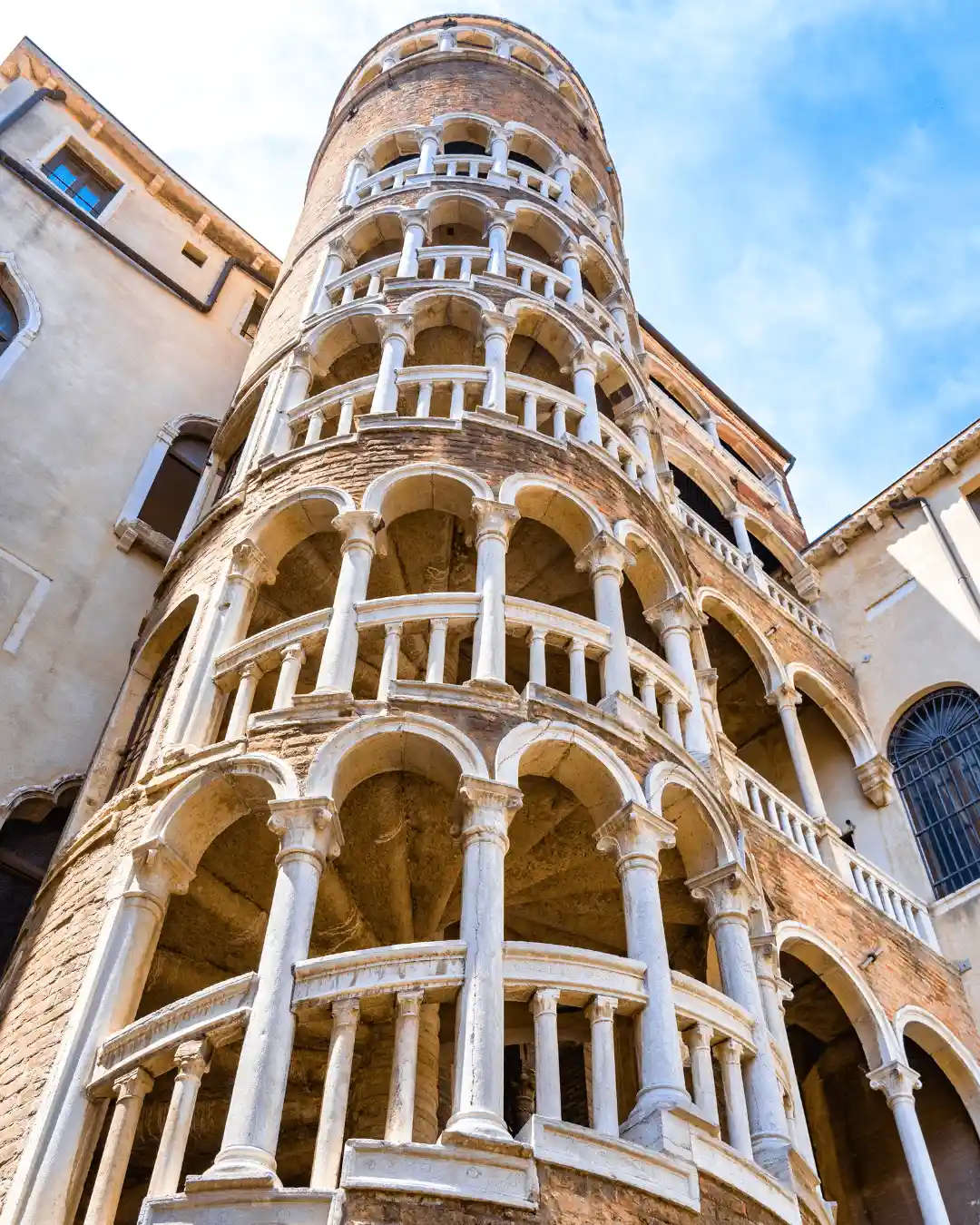
Tucked away in alleyways near the Rialto, this spectacular exterior spiral staircase looks like something out of a fairytale. It was built in the 15th century for the Contarini family, who wanted to impress the rest of the nobility as a status symbol; it combines Gothic, Renaissance and Byzantine styles. Its name, bovolo, means ‘snail’ because of its spiral shape. From the top you have a wonderful view of the Venetian rooftops and St Mark’s campanile.
To go up and visit the Palazzo Cortarini del Bovolo follow this link.
Acqua Alta Bookshop
One of the most interesting places to see in Venice is the Acqua Alta bookshop, one of the most original bookshops in the world. Here the books are not placed on shelves, but in gondolas, bathtubs and barrels, in case the water level rises. There are cats dozing among encyclopaedias, a staircase made of old books and a small door that opens directly onto the canal. It is impossible not to take your camera out, but the best thing is the atmosphere: a magical chaos where paper resists humidity and time.
Fondamenta della Misericordia (Cannaregio)

An area to see in Venice that is becoming more and more fashionable among Venetians, ideal for strolling along the canal at sunset and dining in an osteria with a relaxed atmosphere. It’s not so touristy, but it has a lot of charm: lanterns reflecting in the water, terraces by the canal and a mix of tradition and modern life. Nearby is also the Jewish ghetto.
👁️ Still searching?
Don’t settle for the usual facts — explore the best spots in Venice with the DareMapp app, right from your phon
Old Jewish Ghetto
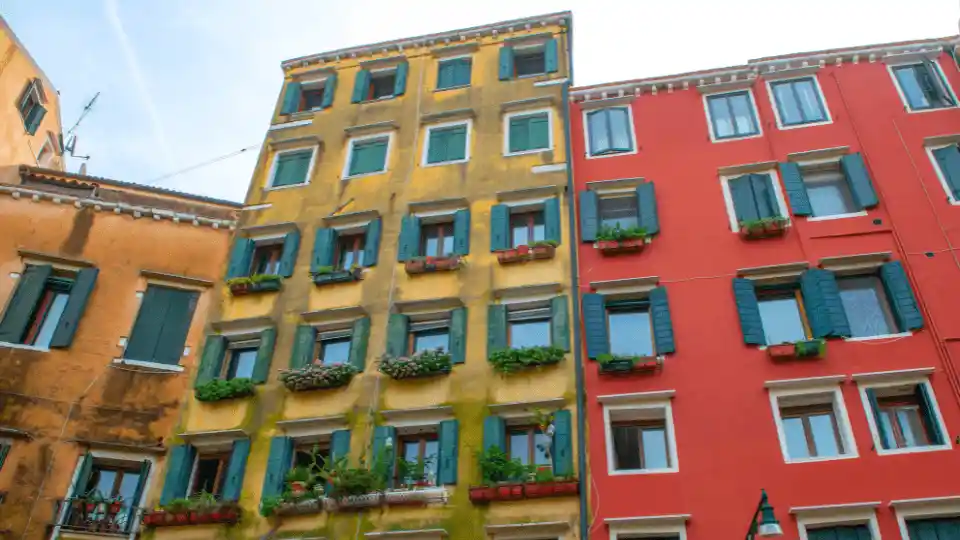
In the sestiere of Cannaregio is the first Jewish ghetto in the world, created in 1516. Jews were forced to live in this area, with gates that were locked at night. The historic synagogues (some of which are open to visitors) and a small square with a moving memorial to the victims of the Holocaust still remain. Today the ghetto is a quiet neighbourhood, with kosher bakeries and a strong emotional charge.
Dorsoduro neighbourhood
This is one of the quietest and most artistic neighbourhoods you can see in Venice. Less crowded than St. Mark’s or Rialto, it’s a place of Venetian calm: wide streets, artisan workshops, bookshops, galleries, and terraces where the locals do sit. Dorsoduro is also home to the Basilica della Salute and the Peggy Guggenheim Museum, so you can combine art and strolling without being crowded.
Tips to travel with peace of mind
When everything is ready — flights, hotel, itinerary — there are only two more things you need to travel worry-free: a good internet connection and reliable travel insurance.
✔ Get an international eSIM already set up on your phone. No need to change your SIM card, search for Wi-Fi, or pay for roaming. Activate it before your trip and enjoy unlimited data from the very first minute, wherever you are.
✔ Take out travel insurance that includes medical assistance 24/7, coverage for cancellations, theft, and — most importantly — advance payment of all medical expenses without you having to pay, wherever you are. Because in a new country, what matters most is feeling safe. Moreover, DareMapp offers you a 5% discount.
Both services can be arranged online in less than 5 minutes, with no paperwork required.
Don’t leave it to the last minute!
👉 Activate your Holafly eSIM at the best price here.
👉 Take out your travel insurance with IATI and get a 5% discount.
What to see in Venice: History, Art and Love
It’s not just the city that floats here, but also art and love. Venice is a navigable canvas.
This city has been the muse of painters, the inspiration for poets and the setting for a thousand love stories. Its light, its reflections and its silence make every corner to be seen in Venice look like a living work of art. And if we add to this the fact that geniuses such as Titian and Tintoretto were born here, that modern art finds its home in a palace by the canal, and that a gondola can become a refuge for two… there is no doubt about it: art and love float here too.
Galleria dell’Accademia: the great Venetian painters
Situated on the banks of the Grand Canal, this gallery houses the largest collection of Venetian painting in the world, with works ranging from the 14th to the 18th century. Here you will find the great names of the Venetian Renaissance: Titian, Veronese, Bellini, Tintoretto… Paintings full of colour, drama and a special light, which seem to come from the soul of the city.
Among its best-known gems is Giorgione’ s The Tempest, an enigmatic work that continues to baffle experts centuries later. If you like classical art, this museum is a must-see.
Peggy Guggenheim Museum: Modern Art with a View
In the heart of the Dorsoduro district, the former palace of collector Peggy Guggenheim has been transformed into one of the most important modern art museums in Europe. Its collection includes works by Picasso, Dalí, Magritte, Kandinsky, Pollock and Miró, among others.
But the best part is not just on the walls: in its garden lie sculptures and the remains of Peggy herself, and from its terrace you can watch the gondolas pass by on the Grand Canal as if you were part of the exhibition. It is a place that mixes avant-garde, elegance and a touch of Venetian eccentricity.
Church of dei Frari: Titian and funerary art
The Basilica of Santa Maria Gloriosa dei Frari, better known as I Frari, is one of those temples that impress without the need for gold. Its façade is sober, but its interior is monumental. Here lie the remains of the great Titian, one of the masters of the Renaissance, under a mausoleum as impressive as his work.
You will also find the tomb of the composer Claudio Monteverdi, and the imposing pyramid-shaped funerary monument to the sculptor Canova. A place where art continues to speak even after death.
💫 You’re one click away from turning reading into adventure.
🗺️ Your Venice tour, with DareMapp
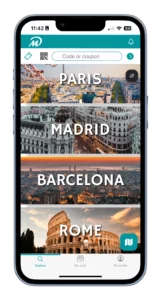
Theatres & Museums: La Fenice, Ca’Rezzonico, Ca’Pesaro
If you are wondering what to see in Venice beyond the canals and the most famous squares, there are three cultural spaces that deserve a stop: the legendary La Fenice Theatre, the elegant Ca’ Rezzonico, and the surprising Ca’ Pesaro, where modern and oriental art coexist in the middle of the Grand Canal.
La Fenice Theatre. Venice’s most famous theatre and a symbol of resilience. Its name means “the phoenix” because it has been destroyed by fire several times… and has always been reborn. Operas by Verdi and Rossini were premiered here, and its interior is still dazzling. You can visit it, without waiting, to experience the magic of Venetian opera, by accessing the following link.
Ca’ Rezzonico. A palace-museum on the Grand Canal that takes you back to 18th century Venice. Original furniture, frescoes, Murano chandeliers and paintings by Tiepolo or Canaletto recreate the splendour of the Venetian aristocracy. More than a museum, it looks like a period party frozen in time. Click on this link to visit it.
Ca’ Pesaro. An elegant palace that houses two museums: one of modern art (Klimt, Chagall, Kandinsky) and another of oriental art, with pieces brought from Japan, China and India. A perfect spot for lovers of lesser-known art in Venice. To visit it, click on the following link.
What to see in venice: Excursions To Murano, Burano & Torcello
Visiting these three islands is like opening a book of stories, art and legends in the heart of the Venetian lagoon. Each has its own personality, its own rhythm and its own history. They are perfect for a half-day or full-day excursion, especially if you’re looking for things to see in Venice outside of the hustle and bustle of the city centre.
MURANO
Just a 10-minute vaporetto ride from Venice, Murano is world famous for its handcrafted glass, a tradition that dates back to the 13th century. Why there? Because in 1291, to prevent fires in the city centre, the authorities forced the furnaces to be moved out of Venice… and so the specialisation of the island was born.
To walk around Murano is to stroll among workshops and galleries, where even today master glassmakers blow, cut and mould glass as their ancestors did. You can visit the Glass Museum, by clicking on this link, and see the process live in the factory or simply lose yourself among shop windows full of lamps, jewellery and sculptures that seem to have been taken from another world.
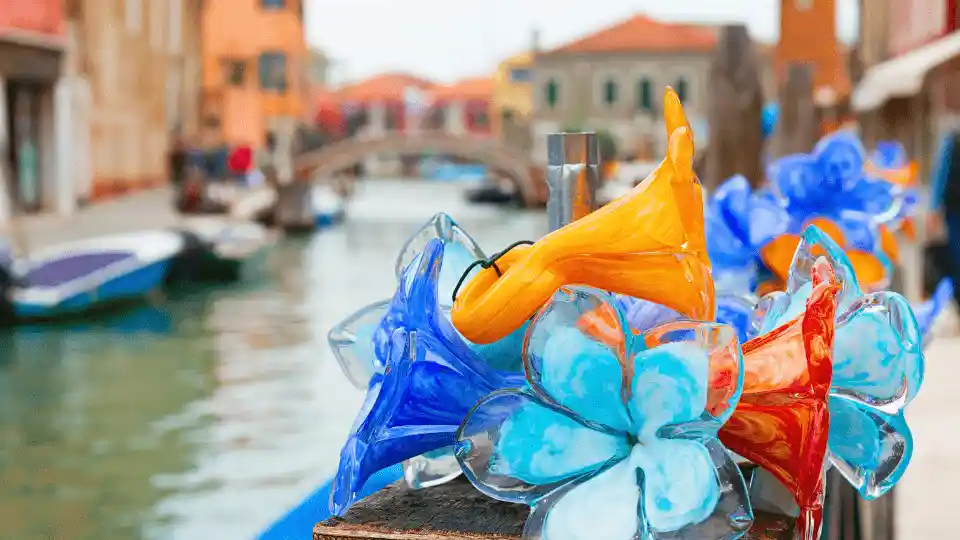
Curiosity: Murano glass is as beautiful as it is strategic and the artisans were forbidden to leave the island to prevent them from revealing their manufacturing secrets.
BURANO
Further away, about 45 minutes by vaporetto, another place to see in Venice is: Burano is one of the most photogenic islands in Italy. Its brightly painted houses create a unique visual spectacle, with canals that look like rainbow mirrors. It is said that fishermen used to paint them this way to recognise them in the fog from the sea, and today it is regulated: if a neighbour wants to paint his house, he must ask permission from the municipality… which assigns him the permitted colour.
STILL WANDERING WITHOUT A PLAN…
Let the DareMapp app show you the places that really matter. Interactive tours, tips and routes — all on your phone.
Burano is also famous for its handmade lace, a tradition that has been going on for centuries. You can visit the Casa Museo del Merletto (lace museum) to see how the embroiderers work, although there are fewer and fewer of them left. Click on this link to see the Lace Museum.
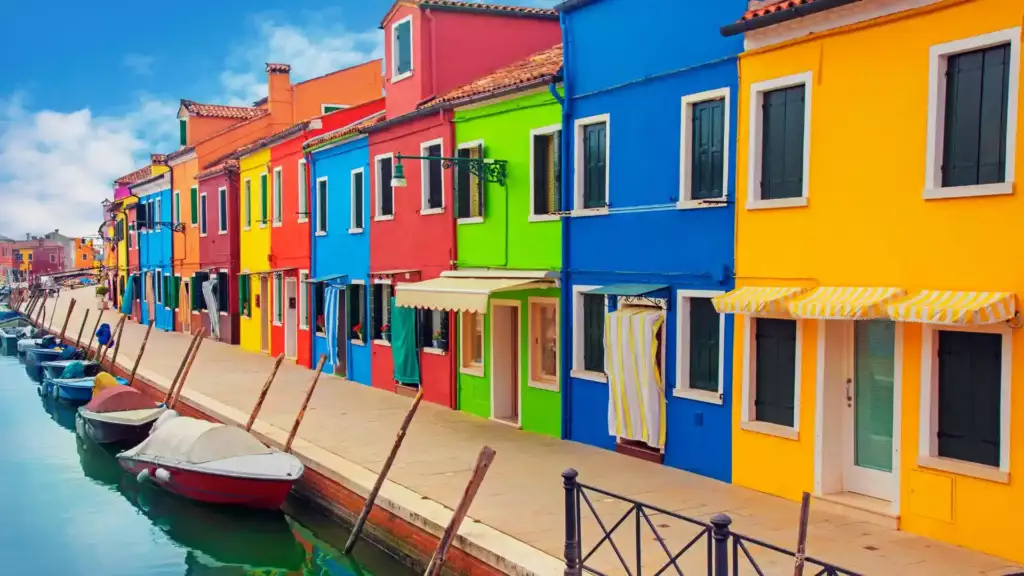
Curiosity: The painter Giambattista Tiepolo lived in Burano, and many artists still choose the island as a place of retreat for its calm and light.
TORCELLO
Torcello is the oldest and also the most mysterious. Today it is an almost uninhabited island (only a few dozen inhabitants), but in the Middle Ages it was one of the first settlements in the lagoon and became more populated than Venice itself.
Its great jewel is the Cathedral of Santa Maria Assunta, founded in 639, which is one of the islands to see in Venice that is still standing. Inside it preserves 11th-century Byzantine mosaics, including an impressive Last Judgement that occupies the entire apse wall. You can also visit the church of Santa Fosca, cross the Devil’s Bridge (without railing, as tradition dictates), and sit on the so-called “Attila’s throne”, a large stone chair whose origin is a mystery.

Curiosity: It is said that Hemingway wrote part of “Across the River and Through the Trees” while staying at the Locanda Cipriani, the most famous restaurant in Torcello.
What to see in Venice: A guide to getting lost
Getting around: by vaporetto
The vaporetto is Venice’s water bus. It runs along the Grand Canal, connects to the islands and is the most practical way to get around when you’re tired of alleys. If you want to discover all the sights and sounds of Venice, using the vaporetto will make your journey much easier. A single ticket costs quite a lot (around €9.50), so if you’re going to use it several times, it pays to buy a 24-, 48- or 72-hour travel card.
So get your notebook ready — we’re bringing you the essentials to see in Florence. Andiamo avanti!
But if it’s Venice you’re after, discover the best spots in the Floating City without wasting time.
✅ With the DareMapp app, you’ll have routes and top tips right on your phone to make sure you enjoy all the wonders of Venice.
When to travel: best times
Spring (April-June) and autumn (September-October) are the best times: good weather, less crowds and beautiful light for photos.
In Winter there’s a lot to see in Venice, especially during Carnival (February), but there’s also a risk of acqua alta (flooding). And in Summer it can be overwhelming with the heat, humidity, mosquitoes and thousands of tourists.
How to avoid the crowds
Apart from knowing what to see in Venice, it’s also good to know some tips on how to avoid the crowds:
Get up early: at 8am, even St Mark’s seems a quiet place. Perfect for taking your photos as if you were alone in Venice.
Dine in local neighbourhoods like Cannaregio or Dorsoduro. There the food is often even tastier with homemade recipes.
Visit the most famous sights after dark, when the cruisers have left. Everything there is to see in Venice at night is even more beautiful.
Where to eat well and cheaply
- Avoid menus with pictures and waiters inviting you in.
- Try the bacari, bars serving cicchetti (Venetian tapas) and local wine.
- Osterie are a good option for homemade dishes and authentic ambience.
Local recommendations:
- Osteria Al Squero (next to the canal and a gondola workshop)
- Cantina Do Mori (the oldest bacaro in town)
- Al Mercà (fast, cheap and tasty)
After exploring its squares, canals and secret corners, one understands that what to see in Venice is not just a list of places, but an experience to be lived with calm, curiosity and all the senses awake.
Here it is not so much the destination that matters as the walk. Every corner is a surprise, every sunset a painting and every alley an invitation to lose yourself. And the best thing is that, in this floating city, getting lost is not a problem. It’s part of the plan.
Remember that with DareMapp you can take a multitude of interactive guided tours, including many of these “European most famous routes”, a fun tour of the main destinations.
What better way than travelling and discovering while learning in a fun way? Visit


